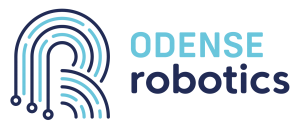Pioneering AI architectures for detection of gas-phase ammonia...
The "Pioneering AI architectures for detection of gas-phase ammonia using hyperspectral thermographic cameras: From simulated environments towards field-use" project aims to create AI frameworks capable of detecting gas-phase ammonia using thermographic hyperspectral interferometric data. It will pave the way to transition this technology from controlled laboratory settings to practical in-field deployment, potentially on UAVs or mobile robots.

Pioneering AI architectures for detection of gas-phase ammonia....
About 93% of ammonia (NH3) emissions in EU27 stem from agriculture and is a major societal and environmental problem with adverse effects on human health. Current methods for measuring NH3 are affected by climatic conditions, are labour-intensive and lack scalability.
The "Pioneering AI architectures for detection of gas-phase ammonia using hyperspectral thermographic cameras: From simulated environments towards field-use" project will develop AI architectures that enable the detection of gas-phase ammonia from thermographic hyperspectral interferometric data and will provide the insights necessary to bring the technology from simulated environments in the laboratory to direct in-field use on UAVs or mobile robots
Background
Thiss project will pioneer novel deep-learning architectures for spectral reconstruction from thermographic hyperspectral interferometric data and apply it to detect gas-phase ammonia. Specifically, we will develop and train suitable deep-learning architectures to bypass the need for numerical matrix inversion, which would otherwise be needed to reconstruct the thermal infrared spectra, which has hitherto been insufficient to reconstruct the spectrum of ammonia.
Furthermore, we will use the developed AI models to test the detection of gas-phase ammonia from simulated environments, aimed at, ultimately, direct in-field measurements. The detection of gas-phase ammonia with AI-driven thermographic hyperspectral imaging would be paradigm-shifting in the field of ammonia emissions measurement, particularly as the project migrates to conducting measurements outside of the laboratory setting, which ensures research quality at the highest
international level.
Additionally, the developed AI architectures for the spectral reconstruction of thermographic hyperspectral interferometric data would be innovative not only to the field of
ammonia sensing but broadly impact in any field working with this type of hyperspectral data, including forensics, building inspections, defence and more, by enabling spectral reconstructions superior to those obtained by conventional methods. Thus, offering new insights into thermographic hyperspectral payload integration with UAVs and gas-phase ammonia detection, the project has both research quality at an international level and significant innovation height.
Purpose
The purpose of the project is three-fold:
1. Develop an AI architecture correlating thermographic hyperspectral interferometric measurements (intensity vs. mirror separation) to the reconstructed
spectrum (intensity vs. wavelength/wavenumber) as conventional Discrete Fourier Transforms is not compatible with the novel hyperspectral camera technology.
2. Measure gas-phase ammonia in a laboratory environment that emulates aspects of in-field ammonia emissions.
3. Collect thermographic hyperspectral imagery in-field using the developed computational frameworks.
Participating organisations will gain forefront knowledge on future technologies for ammonia emissions quantification and monitoring, opportunities to scope the technology towards application in agricultural settings, and gain new competencies in handling, deploying and interpreting thermographic hyperspectral cameras and their output data.
The successful project will be a driver towards creating more tech- and data-driven workplaces and will support the broader society by tackling an underestimated source of anthropogenic pollution in the 21st century.
Expected results
Project participants
The University of Southern Denmark (SDU)
Odense Robotics
Funding
The Ministry of Higher Education and Science has financed this project with 552.960 DKK.
Start and finish
The project runs from August 2023 to August 2024.
Contact
Do you want to get involved or hear more? Reach out to Ole Georg Andersen.
Contact us to learn more
Curious to find out more about the project and how you can get involved? Get in touch with Ole.


Knowledge-based innovation and the Fehmarn Belt project







